The Use of the “Gob Wire” on the Tugboat | Carlo Gatti
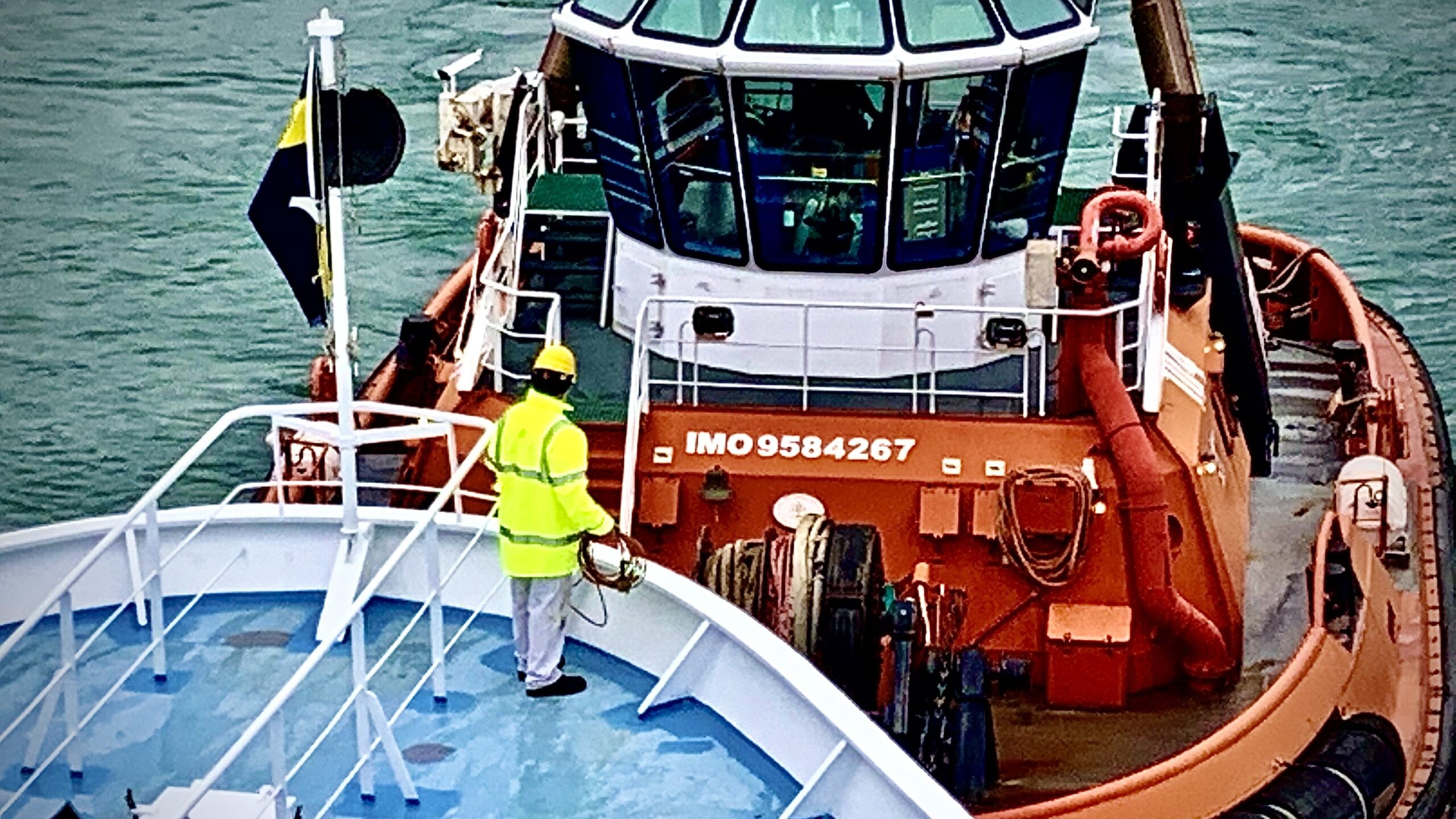
There was a time, which can be said definitively archived in the early 90s, when the towing technique used in the world’s leading ports was very complicated.
Each Port tug had its own particular “shipbuilding”, which was affected by age, origin and use.
The Second World War then moves the play cards, so the engines, the architectures, the functionalities, and the logistics. Many tugs were remnants of war: large hulls with low engine power and small hulls with high engine power. With the cold of the northern wind, steam engines and diesel engines were set in motion only by “wise” hands, which had received the secret chrism of some “magician-priest”.
The Rr’ captain was the first victim on board. If he wanted to “see” the trailer and the pilot, he had to open the bridge doors because the lifeboats, the gigantic windsocks and the disproportionate chimneys certainly gave prestige and visibility to the RR Company, with their grandeur. Still, they took it away from the captain, forced to dance from one side to the other like a macaque, not only because of the cold but to work too, which was necessary for everyone’s income, especially shipowners. The VHF radio was still under study.
It was a time when the “principals” – as everybody called them then – preferred to hire the “rivieraschi” *(from riviera). Certainly for their seafaring skills, but above all, ’cause they did not return to their homes, remaining “hosted” on board for the whole week, guarding the tugboat “for free”.
Then, in 1968, a year of essential revolutions, the first “Rotors” with a cycloidal system appeared on the scene.
Seeing them work in tandem with wooden tugs, it was only natural to laugh at them because they gave, as a whole, the bizarre idea of “multi-ethnicity ante litteram”. It was a brief and strange coexistence of extremely heterogeneous vehicles, which had the same function of towing ships, but with different capacities. From this atypical picture emerged above all the flexibility and the spirit of adaptation of the so-called “ultimi barcaccianti” *(last service boat workers).
It was an era in which even the ships that landed in Genoa were classified into steamers and motor ships, into modern “containers” and gigantic oil tankers, into the “navalpiccolo” *(small vessels), and even some motor sailers moored at the dock and the internal ports.
In the naval panorama of those years, even the tiny wooden tug Benghazi had as many hooks as the other most requested and famous tugboats.
In these few introductory notes, however, the explanation of that strange phenomenon that linked the tugboat’s name to its captain is understood.
Let us cite just one example: when the Americans landed in Normandy on June 4, 1944, they also had to bring the harbour tugs from home to help a fleet of 5,000 ships to extricate themselves in restricted waters or, rather, to avoid bowing. During the invasion on the famous beaches of Omaha–Juno–Gold etc.
After the war was over, the surviving D-Day tugs were purchased and deployed in several European Ports.
Many will remember those who landed in Spezia and Savona. Only tug Algeria arrived in Genoa with a round formwork and a unique case in the Genoese fleet, equipped with two left-handed propellers and various other technical features.
Captain “Carlin” took command of the unit and remained, for eternity, the only connoisseur of that strange tugboat. He soon had to resign himself to stay on board until his retirement, which coincided with the demolition of the formerly USA vehicle, which occurred many decades later.
Each tug, as I said, had its history and was different from all the others: the Fort was a steam tug, almost 40 meters long, adapted to Port work for at least thirty years under the command of its loyalist captain “Claudio“.
The same was for Holland, Iberia, Finland, Tripoli, Lebanon and other old mastiffs considered “out of series”.
The captains and chief engineers had to, theoretically, be able to “turn on” and manoeuvre all the tugs in the RR Company. These characters had to possess in their hands and head the capacity to manage at least one hundred years of technical-scientific progress distributed on a fleet about 45 units strong, representing everything older and outdated but also what was most modern in the world then. In fact, with the deployment of “Rotors”, the Company turned a page and its mentality.
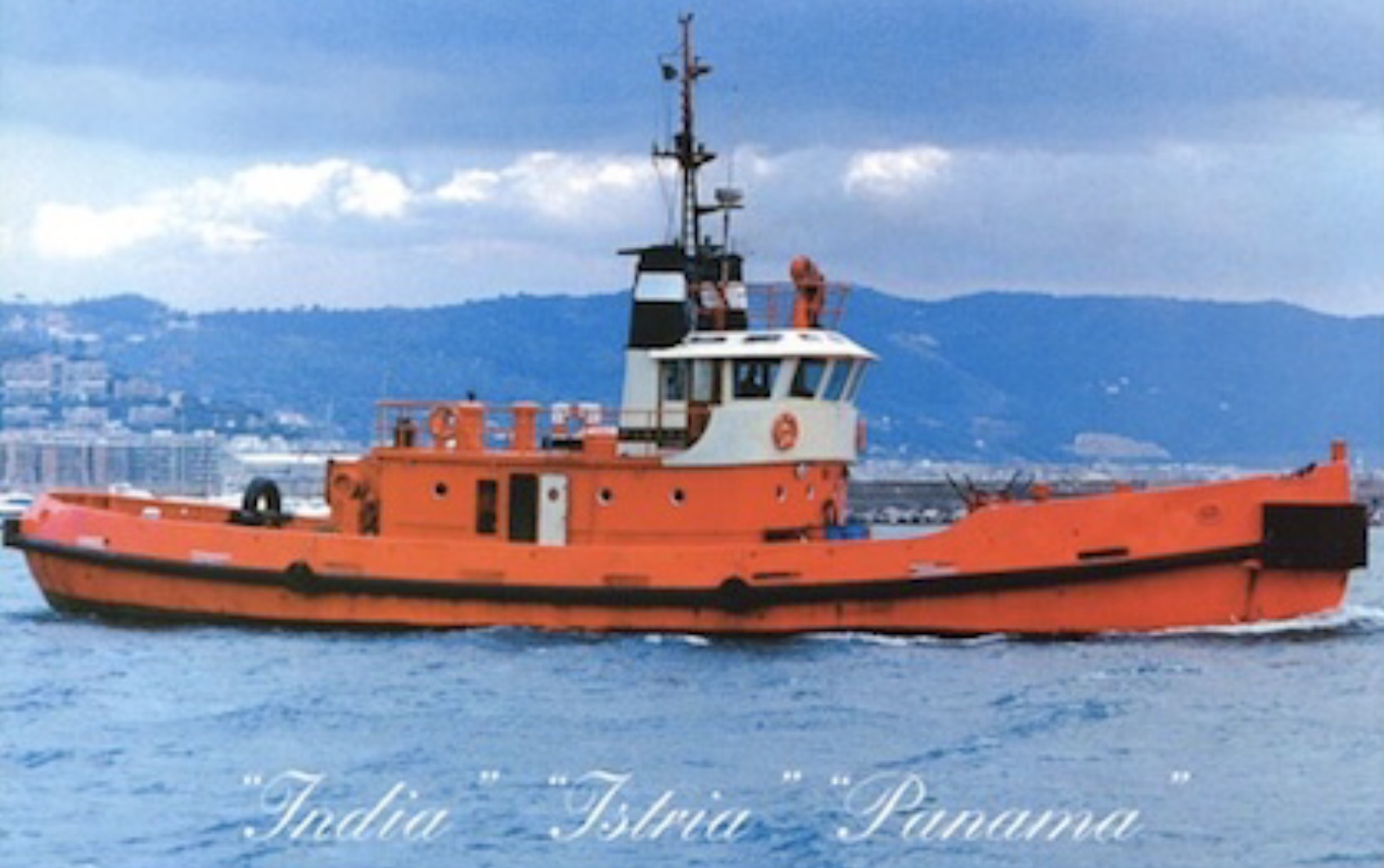
It was the time when the most experienced captains of the moment (Garilli, Pasqualin and Vittorio) received the coveted recognition of driving (they had steering wheels like buses), the only three technical innovations which appeared on the Port scene since the end of the war: the “Rotors”, on which the three musketeers stood guard in ties and white shirts, in symbiosis with the new environment on board which was too clean and aseptic, compared to the rest of the fleet which, while still operational, still puffed clouds of black smoke, smelly and concentrated killer dust.
Starting from 1968, the wizards in blue overalls of the Ponte Parodi’s workshop began to call themselves “technicians”. They wore candid white overalls “NASA-style” and coloured pens, a calibre, peeped out of the pocket and always went around with drawings and instruction manuals.
The crews understood they could tow the ships entering and leaving the Port with a new, safer, more elegant, and faster system. When they realized that they could finally enjoy logistics similar to that of their homes, at night, they stopped on board and thanked the owners from their heart, without feeling taken advantage of because of the once unpaid night watchman.
However, as is well known, radical transformations and changes are called epochal precisely because they are expensive and slow to complete. So that the somewhat unique tugs, those pulled up from the bottom and more challenging to interpret, had a very long life and then, many of them were recycled and sold to smaller harbours and perhaps still work; maybe in “gob railing”!
But what does “GOB” mean ???
Please have a little more patience, and allow us to take a step back!
As we said, it was customary to call the tug by its captain’s name for another twenty years. The latter, paired with the faithful foreman, became the “specialist”. The captain often knew the most intimate secrets, the vices, the merits, the defects, the reactions and above all, the manoeuvring behaviour of his tugboat. Yes, especially in “gob”.
Many do not know, but it was the azimuth tug, called the UNIC Model, introduced in the 90s in all “busy” Ports of the world to declare the traditional propeller tug and the infamous use of the “gog line” obsolete and useless.
The decline of this complicated manoeuvre came when the architects and naval engineers finally decided that the hook, from the central turning point of the tug, could be moved towards the stern.
Technical progress was possible thanks to the invention of new propulsion and steering systems, which allowed the UNIC to move sideways at speed.
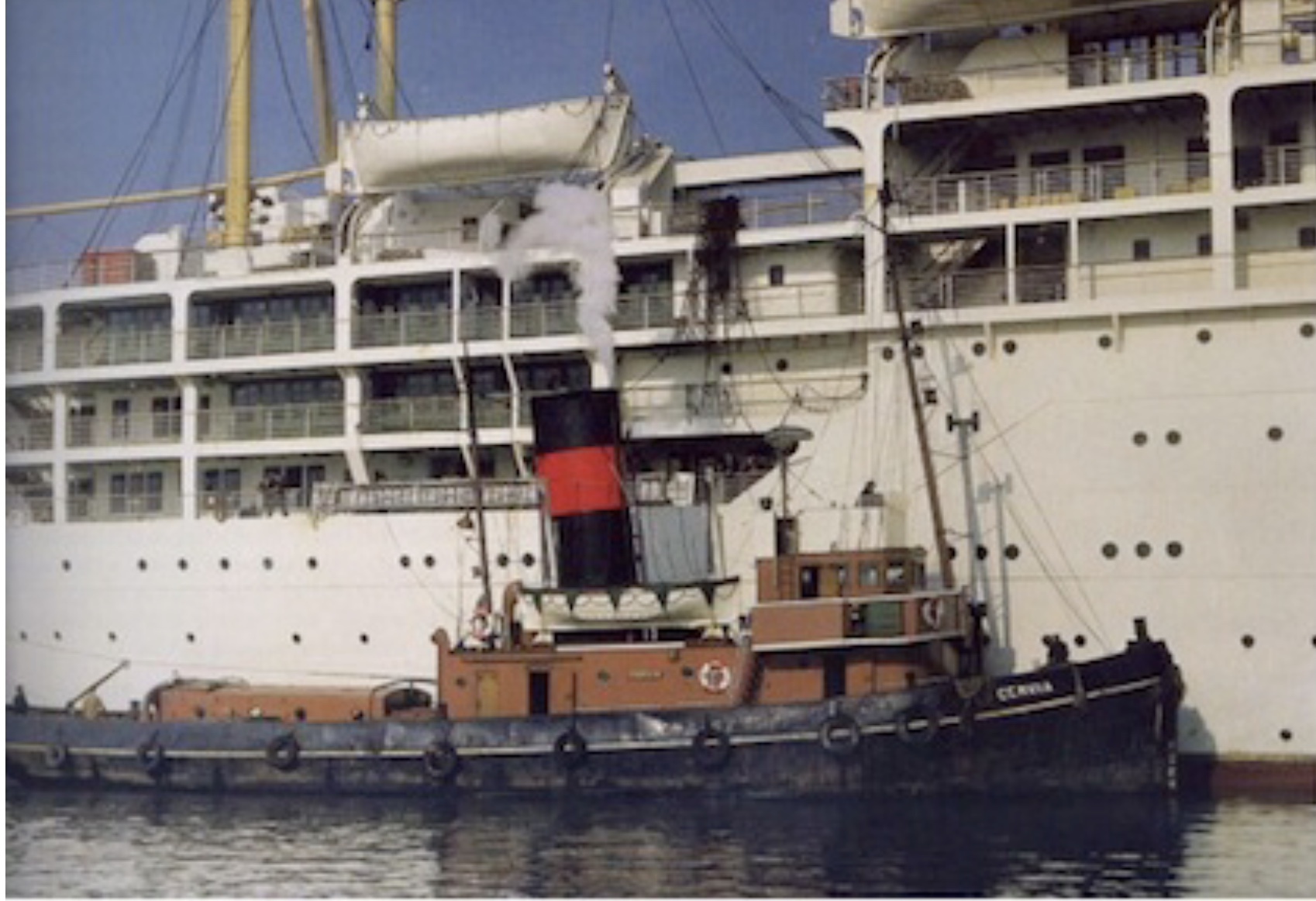
Unfortunately, until the introduction of the new technological cycle, it was necessary to sketch the tow line at the stern when the tug acted as a brake pulling in the opposite direction to the convoy.
With the hitch positioned in the centre, the gob-less tug would be towed sideways, i.e. at 90 ° to the direction of motion, with the danger of girting and capsizing in this dangerous high heel position. At that time, the tugs had a considerable draft (4/6 meters), and the pressure exerted on the hull was proportional to the ship’s speed.
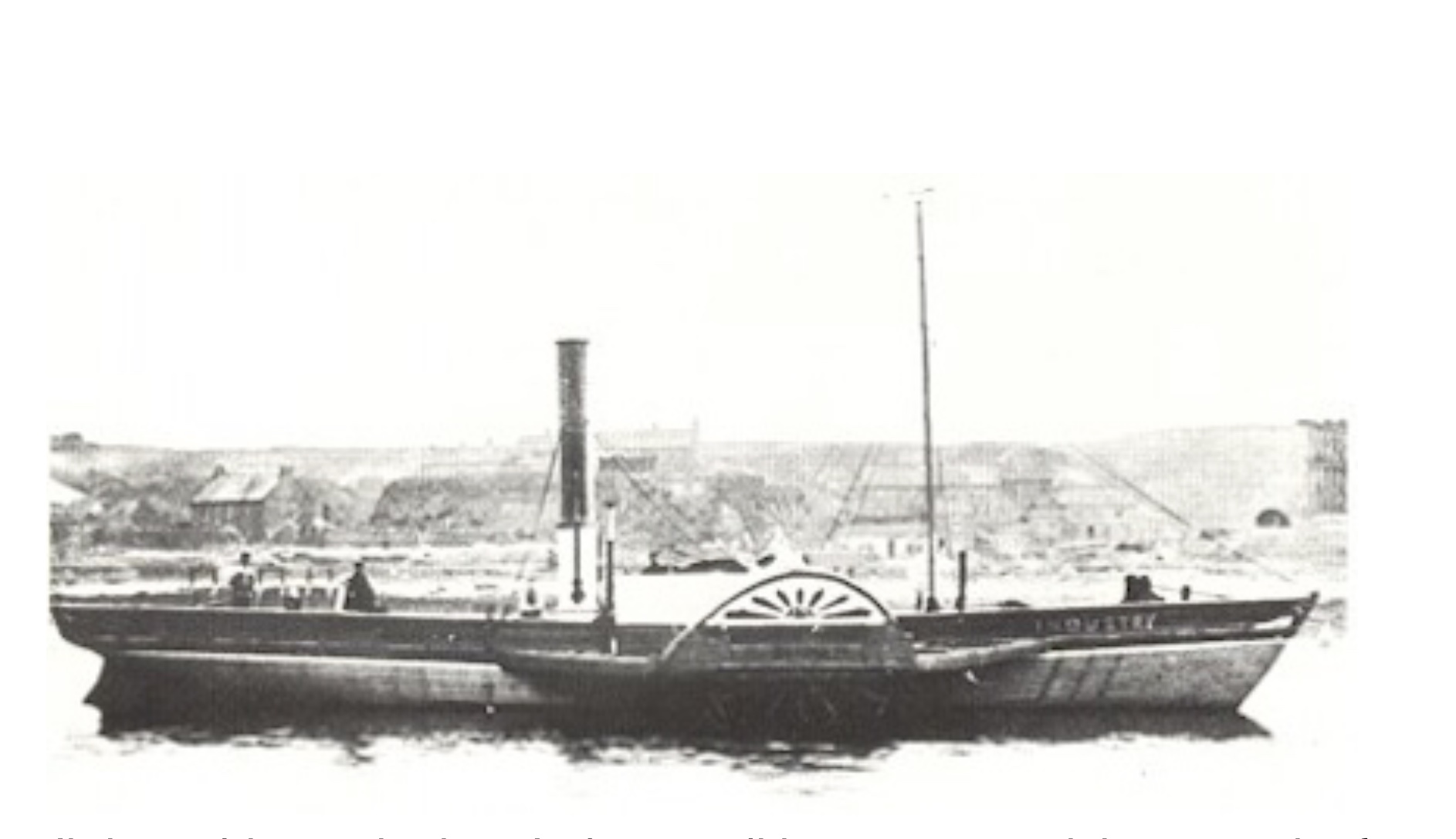
Therefore, we can affirm – without fear of denial – that tugboats had to use the “gob wire” for about 150 years to survive. (from when it was born in the mid-19th century until the advent of the latest model).
There were many employment opportunities, and here we can recall some of them:
- – When the ship retreated, for example, towards its berth on the quay.
- – When the ship moved between one quay and the other “without engines”.
- – While navigating the canal with an engine failure.
- – Transfer of dead ship, from one dock to another, from one Port to another.
And, of course, it would be impossible to analyze here in many other situations.
In those years, the heaviest and most potent tug in convoy carried one or two cables to the stern of the ship. On the contrary, the lighter took it in the bow and placed the gog line, facilitating lateral movements and more reactive and agile manoeuvrability.
But now let’s let these brief notes on the history of the Port advance, with caution, in that labyrinth of manoeuvring teaching that no one has ever written and explained: the Gob or Gog wire.
You got it right! Every captain, or would-be captain, had to learn the use of the gob wire at their expense – By hearsay and having seen – Without making any comments in secret. And it was also so challenging to explain that even the most democratic couldn’t find the right words.
For the sheer pleasure of archival research, let’s go into the details of this arcane mystery. To reveal what little we have left of those distant memories that overwhelmed and out of fashion.
We were in 1968, and we entered direct news.
In normal weather conditions, an oncoming medium-tonnage ship takes two RRs and secures them: one in the bow and the other in the stern. The final mooring is a toothed jetty of the New Port of Sampierdarena (Genoa).
The convoy proceeds in the canal towed by the forward tug. The stern one follows the ship laterally “steady” (usually windward). When the convoy arrives close to the mooring area, it stops between the two warheads, and the vessel is turned around and then begins to retreat.
The Port Regulations provide, for safety reasons, that the ship moor with the bow out to be ready to move in case of emergency.
The tugboat positioned forward had a propulsive function in the first phase, in the canal. In the second phase, the roundabout helps the ship to approach to make it take a position parallel to the quay. During the turn, the captain of the forward tug must be in the proper position to hold and calibrate the ship’s stop towards the dock but must also be ready to put in the gog because the vessel is already retreating.
Quickly, even using the engine astern, he will have to create slack on the towline, make it rest on deck, possibly in the central aft area of the tugboat, allow the sailors to block it with a gob to the appropriate cross cleat, give it time to fast safely and, finally, slowly let the cable come into power without tearing the gob line.
If the ship has to retreat 100/200 meters, it has sternway, then the Rr in “gob” must always be in the correct position, ready to help the ship:
- – widening it from the quay,
- – accompanying it towards the quay – according to the direction and strength of the wind and any yaws.
The gob Rr dragged by the ship suffers its speed. For this reason, it is in the unpleasant situation of passivity, with the risk of becoming unmanageable. That means it may not respond to the rudder commands and, therefore, can no longer be helpful to the ship and damage it.
At this point, the captain of the Rr in gob line must appeal to his decision-making, coolness, ability, and timeliness. He has to keep track of the ship’s speed. He must not get carried away in a dangerous and meaningless race.
To achieve this, he has two weapons at his disposal:
1 ° – Braking the convoy.
While supporting the backward motion of the ship, he must keep a reserve of power that allows him, at any time, to perform his manoeuvre: to slide easily from one side of the ship to the other, to correct, act as a rudder and safeguard from a collision with Port obstructions, various obstacles or other naval units.
2nd – Loosen the gog.
The moment the ship is under control, the pull decreases, the tugline is loose, and the Rr Commander lets the gob rope be slacked by one/two meters to gain manoeuvring agility.
The amount of slack depends on the turning you plan to make, based on the difficulties in progress (darkness, presence of wind, current, unloaded ship or ship with a large draft, presence of other vessels, paddle-wheel effect, etc.)
The manoeuvre’s success depends on the coordination between the two tugs, who know each other’s difficulties at all times. But that’s not enough! For the success of the manoeuvre, the ship’s pilot must constantly evaluate in advance whether the speed assumed by the ship at a given moment is the right one and not exceeding the recovery capacity of the gob tug in those particular conditions.
From these brief considerations, it is clear the importance of the role played by mutual knowledge between pilots and Rr captains, between Rr captains themselves and, above all, the obligation of all participants in the manoeuvre to know in depth the qualities and difficulties of the tugboat working in gob at any time.
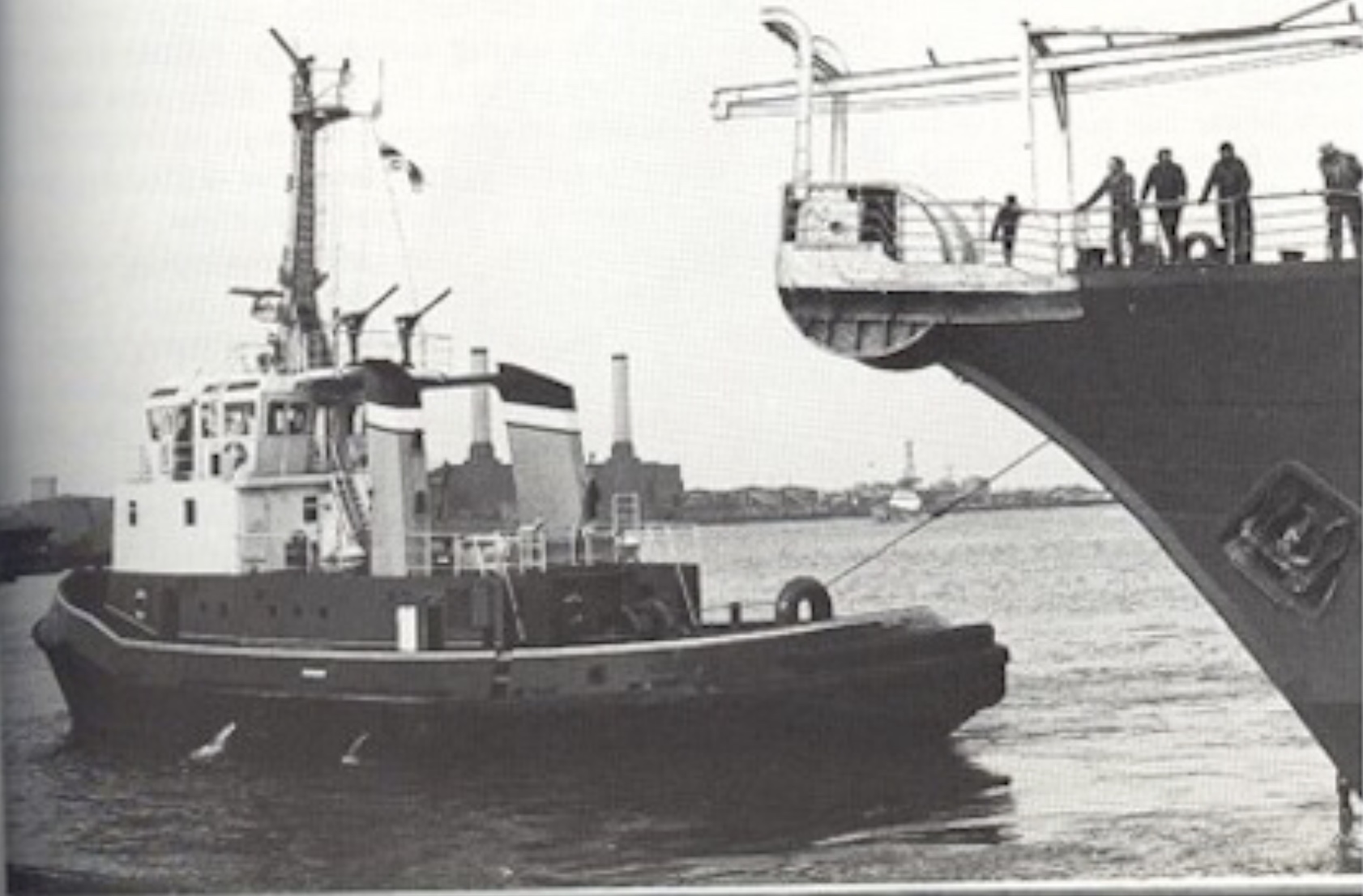
Sifting through our memories, we must say that we have seen authentic artists at work. I am referring to some Rr captains who, in moments of great difficulty caused by the strong wind, invented prodigious ballets in silence and with extreme ease and were always in the proper position.
It was nice to watch the most feared manoeuvre in the Port transformed into a refined spectacle for the lucky few, who could enjoy those rare stunts live directly from the manual of the art of manoeuvring. Don’t get us wrong! We are not talking about the school manual but the magical one, which the seafaring intuition can only give to the most sensitive seamen.
During these manoeuvres, the Pilot and the Captain of the tug never spoke to each other. They never exchanged whistles, comments, etc. It was a sign that “they understood one another”! And the manoeuvre was perfect because it was unanimous, as a team, without protagonism, without hysteria.
Knowing how to work in gob was, therefore, the thermometer that measured the technical ability of an Rr’ captain. They were very good, good, so-so, or poor, depending on the risk that, in general, they made the ship and its crew run.
The standard of the skills of the boatmen has always been very high by tradition.
For many decades they have been considered the best in the world, and we have listened to certain flattering judgments with our pilot’s ears.
When the three super-maneuverer “Rotors”: INDIA, ISTRIA and PANAMA, entered the line, it was up to them, by widespread acclaim, to have to occupy the place of the gob wire because they had the hook at the stern and were not afraid, like the old Rr, to be crossed and overturned in the reverse motion, also equipped with the lateral thrust that guaranteed the tug performances never seen before.
But it is also true that in the history of Genoese harbour tugs, there have been “technical generational gaps”, often out of jealousy of the elderly captains. Like many pilots of the same era, they were reluctant to leave the manoeuvre to the newcomers.
Probably the RR company should have intervened, appointing Instructors, some of their youngest and most talented captains: Marietto, Ragonetto, Florindo … to establish programming and impose a less personalized and less mythicized operational view of the work.
In defence of the older generation, we can affirm that the Rr’ captains of those times, as well as many harbour pilots, had “built by themselves”, often through complex personal stories of wars, sinking, misery and suffering.
They had had little in absurd and undemocratic times.
That little was their wealth, and they were unwilling to give it up!
